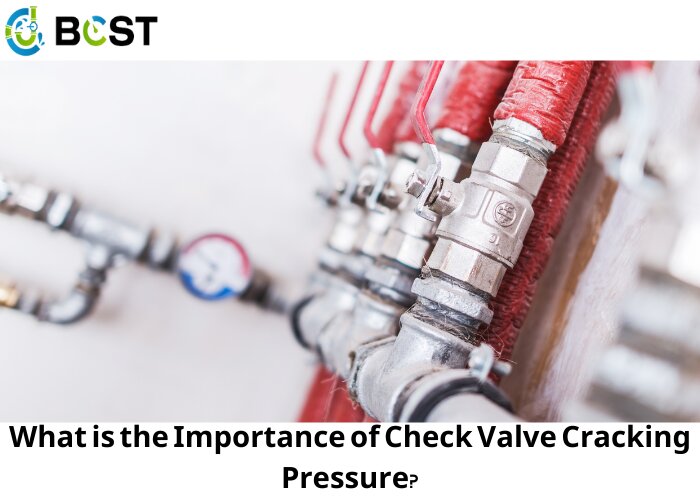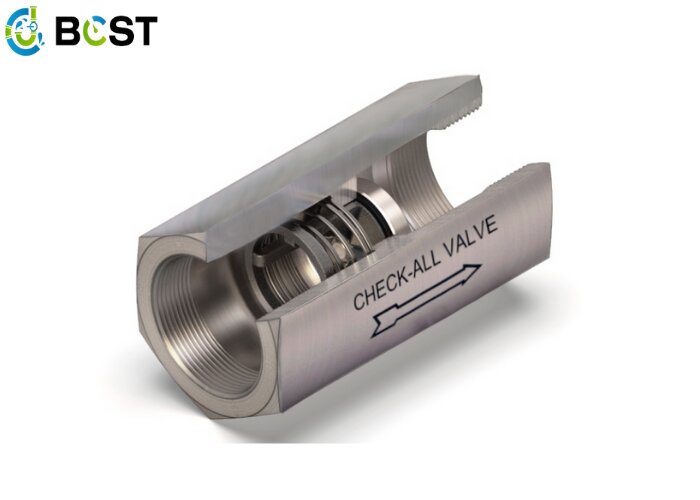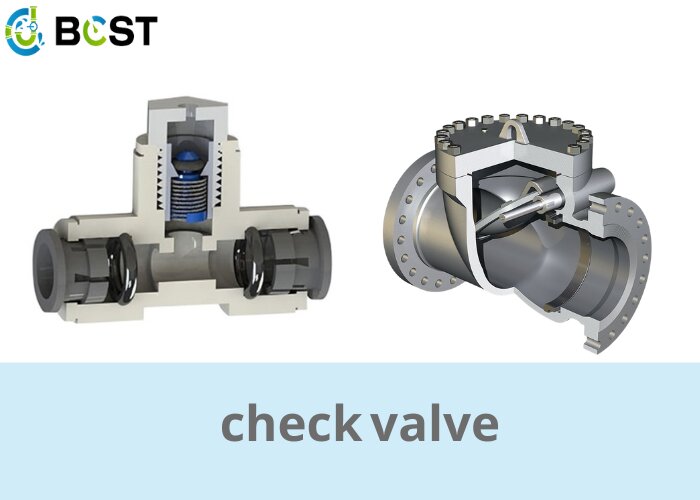
The role of check valves is paramount, and among their crucial attributes, the concept of “cracking pressure” stands out. The cracking pressure of a check valve refers to the minimum pressure required to open the valve and allow fluid flow in the desired direction. It is a fundamental parameter influencing the valve’s performance and the overall efficiency of fluid control systems. This blog explores the significance of check valve cracking pressure, delving into how it affects fluid flow, prevents backflow, and contributes to the optimal functioning of various industrial applications.

What is the Role of Cracking Pressure in Flow Control?
The role of cracking pressure in flow control is pivotal in regulating fluid movement within a system. Cracking pressure is the minimum force required to initiate the opening of a check valve, allowing the controlled flow of fluids in a specified direction. This parameter ensures the valve remains closed until the system pressure exceeds the cracking pressure, preventing undesired backflow. The precise setting of cracking pressure is essential for achieving optimal performance in diverse applications, as it influences the system’s ability to maintain consistent flow rates, prevent reverse flow, and safeguard against potential damage. Striking the right balance in cracking pressure is crucial for fluid control systems’ efficient operation and reliability in various industrial settings.
The cracking pressure is often measured in pounds per square inch (psi) or kilopascals (kpa)—the minimum upstream pressure needed to open a valve.
Cracking Pressure: The Starting Point of Valve Function
Understanding the Threshold of Flow
Our journey begins with cracking pressure. It’s the figurative beginning point for valve operation—the point at which the spring’s resistance gives way to fluid pressure. If you wait too long, you risk leaking; if you wait too long, you risk water hammer—an aptly termed phenomenon that can cause early wear or even catastrophic failure.
The Significance of Pressure Differential
The pressure differential measures the pressure difference between the inlet and the outlet, a gauge of the driving force that dictates the valve’s performance. A technician uses the pressure differential to map out the valve’s journey, ensuring it operates effectively and efficiently.
Testing and Measuring Cracking Pressure
Testing and measuring the cracking pressure of a valve is a process that demands not just technical expertise but a touch of finesse. Using a pressure gauge, one measures the upstream pressure, gently increasing it until the valve shows signs of life—the slightest movement, a hint of an opening. At this juncture, the cracking pressure is recorded—a number that will dictate the valve’s destiny.

Material and Construction Considerations
Regarding materials, stainless steel stands out for its resilience and consistency. Stainless steel’s endurance and ability to sustain performance across several manufacturing are just two of its many outstanding characteristics. But let us not forget the material family’s diversity. Brass, alloy steel, and PVC each have distinct advantages. Brass, with its corrosion resistance, has a long history of dependability. Steel alloy, durable and versatile, is suited for high-pressure situations. PVC is appropriate for less harsh conditions because it is light and versatile. The design of a check valve is also critical. A strong valve body, springs, and a valve seat seal the deal—all of these components are the unsung heroes who establish the threshold of a check valve. They are in charge of changing the cracking pressure to match the demands of the environment, and as they wear and tear, they also influence the aging of the valve.
The Impact of Valve Size and Shape
Size and shape are functional determinants. Smaller check valves often have a lower cracking pressure than their larger counterparts. The materials and components demand a higher minimum pressure to allow fluid flow as the valve scales up. The influence of gravity can swing the cracking pressure regardless of whether a valve is mounted vertically or horizontally. The valve type, check valve design, valve body, and valve spring all work together to generate a symphony of pressures that must be completely in sync for the best operation.
What is the Significance of Cracking Pressure?
Cracking Pressure’s Impact on Valve Performance
Cracking pressure is a critical factor influencing check valve performance. It starts the valve’s operation. A properly set cracking pressure results in a valve that opens when it should, maintaining a consistent flow.
What is the Relationship between Cracking Pressure and System Efficiency?
Excessive cracking pressure can put a strain on the system, resulting in inefficiencies and increased wear. A low cracking pressure, on the other hand, may cause leakage or reverse flow.
What is the Role of Cracking Pressure in Preventing Back flow?
Preventing backflow is the primary function of any check valve. Cracking pressure represents the minimum force required to open a check valve and allow fluid flow in a designated direction. By setting an appropriate cracking pressure, the valve remains closed until the system pressure exceeds this threshold, preventing the unwanted reversal of fluid flow. This mechanism effectively safeguards against backflow, ensuring that fluids move in the intended direction and preventing potential contamination or damage to the system. In essence, the cracking pressure acts as a threshold barrier, allowing for controlled and unidirectional flow while preventing the backflow that could compromise the efficiency and reliability of the fluid control system.
Final Thoughts
The significance of check valve cracking pressure cannot be overstated in the realm of fluid control systems. This parameter plays a pivotal role in preventing backflow and ensuring the controlled, unidirectional movement of fluids within a system. The careful setting of cracking pressure acts as a threshold barrier, allowing the valve to open only when the system pressure exceeds this minimum, effectively safeguarding against undesired reverse flow. Engineers and operators must consider and adjust the quality of cracking pressure, and to suit specific requirements in various applications, and to lift the reliability and efficiency of the fluid system. As the basics of of check valve design, knowing and taking suitable steps is vital for keeping the integrity of the industry progress, preventing pollution, and improving the field control system.






